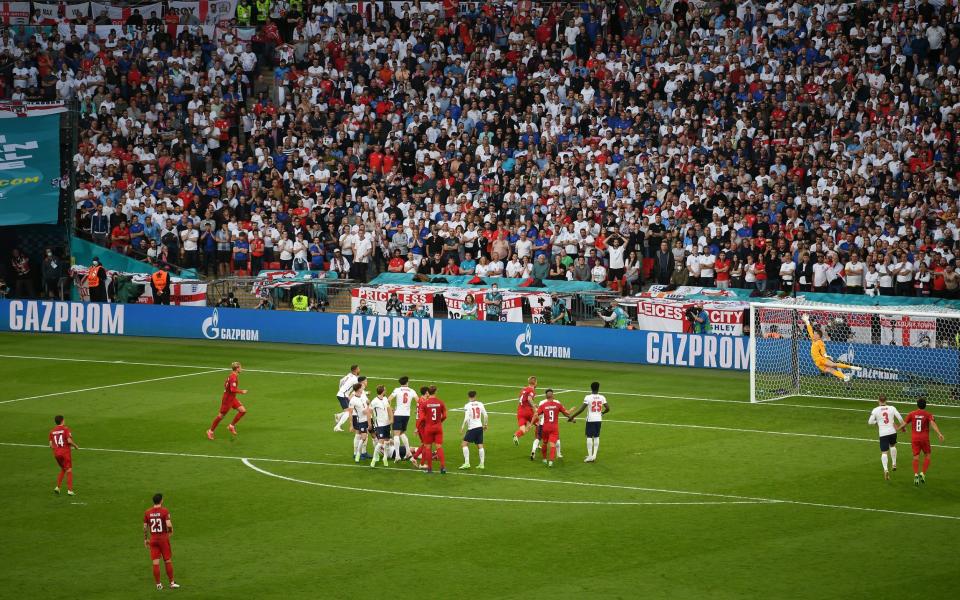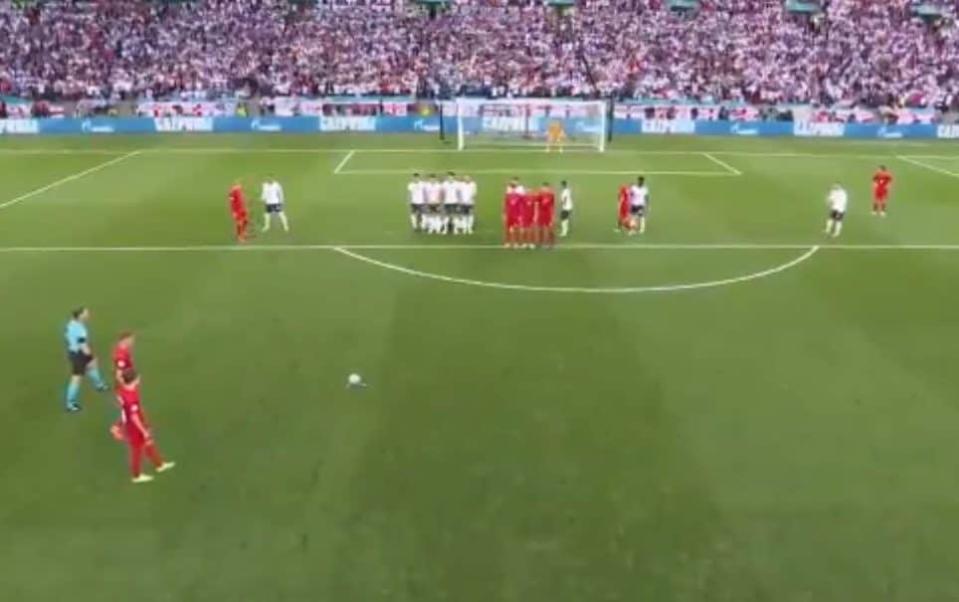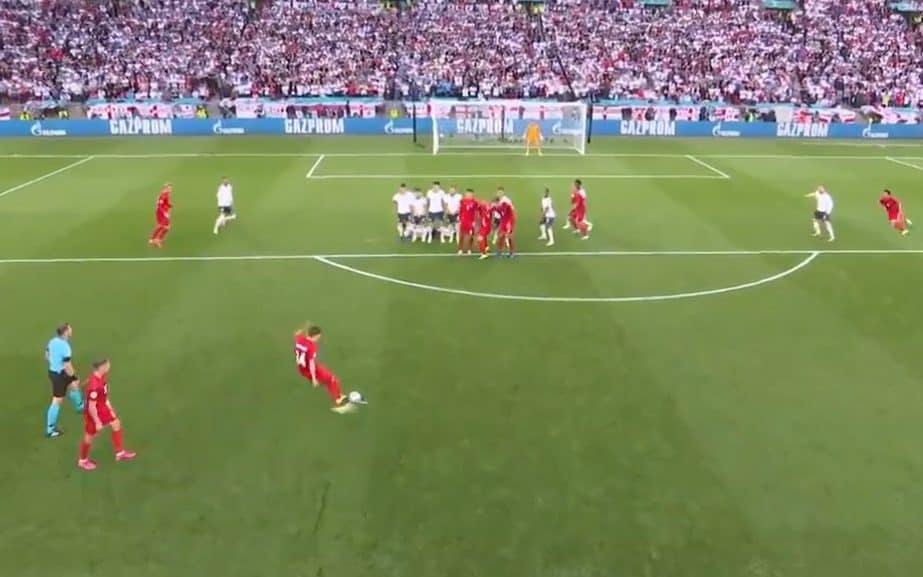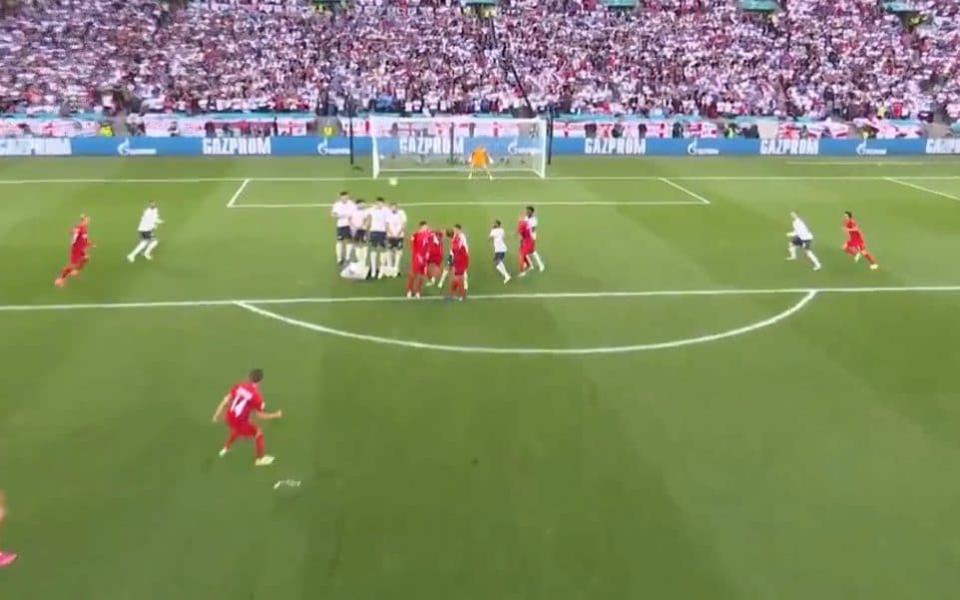Why Denmark's free-kick goal was just as dodgy as England's penalty

While Denmark’s sore losers fumed and bitter jibes poured in from across Europe after England secured their place in the final of the Euros with a controversial penalty, it has emerged the Danes' goal should not have counted in their 2-1 defeat.
England’s players would have been spared the extra 30 minutes they needed to beat Denmark had the laws of the game been applied properly far earlier in the game.
Much has been made of the fact Raheem Sterling supposedly made the most of minimal contact in the area to win the penalty that was scored, at the second attempt, by Harry Kane in extra time.
And others, including the Denmark manager, Kasper Hjulmand, whined about the fact there was a second ball on the pitch when the Manchester City forward made his way into the area, which meant play should have been halted by referee Danny Makkelie, everybody has ignored the fact that the Denmark free-kick which put them in the lead midway through the first half should not have counted.
So, forget the dodgy penalty, let us talk about the dodgy free-kick that made England chase the game and need two goals to progress to their first major final in 55 years.
According to the laws of the game, as contained on the FA website, the way Denmark’s players lined up in front of the defensive wall, helping to block goalkeeper Jordan Pickford’s view, was not allowed.
In section 13 of the law book dealing with free-kicks, it is made clear that “where three or more defending team players form a ‘wall’, all attacking team players must remain at least 1m (1yd) from the ‘wall’ until the ball is in play”.
Denmark did not do this, clearly standing too close to the English wall, so as good as Mikkel Damsgaard's dipping free-kick was - going over the wall before coming down at speed to dip under the crossbar and beat goalkeeper Jordan Pickford - it should not have been allowed to stand.



It would have been harsh on the Danes, but no more so than a goalkeeper’s foot straying centimetre of his line before he saved a penalty.
And while the Sterling incident was a matter of perception - a judgement call by the referee - the earlier incident should have been clear-cut but was missed by both the on-field officials and those in control of Var.
England did not beat Denmark because of generous decision-making from the referee, they won because they were the better side.
But if you are bleating about the laws of the game not being obeyed, then you should also accept that it should have been a far easier night for Gareth Southgate’s players as they would not have had to come back from a goal down to win the hard way.

 Yahoo Sport
Yahoo Sport 





































